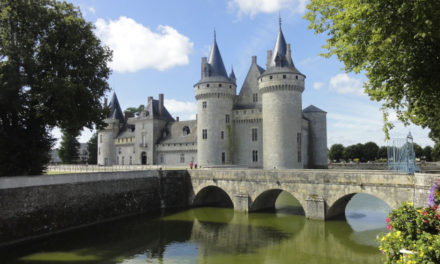Indre is the old land of Berry, now divided between the Indre and the Cher. It is first and foremost George Sand country, and is best evoked by her novels which romanticise the rural life and peasants of this region, which she called Vallée Noire. Many places claim a connection and a fascinating tour can be made, best perhaps with a good gossipy biography in hand. She lived at Nohant, in the southeast corner of the department, in an 18th century chateau where she was visited by many luminaries of the era, including Chopin, one of her many lovers, and Balzac, Flaubert, Delacroix and Liszt. Here she wrote many of her novels, and the house still has the furniture and objects with which she lived. She is buried in the quiet family cemetery in the grounds of the chateau.
Towns in the Indre
Book a Hotel in the Indre
At La Chatre
At La Chatre, the nearest town, is a Musée George Sand et de la Vallée Noire. Nearby is Vic, a Romanesque church with beautiful 12th century frescoes, discovered in 1849, of which Sand was very fond. You can also visit the chateau de Sarzay, which Sand featured in one of her novels. At Gargilesse is a little house which she shared with another lover, Manceau, and which has now been turned into a museum. South of La Chatre is another village with literary connections, Chassingnolles, which was the subject of Célestine, a book by Gillian Tindall, based on a cache of old love letters, which evokes the 18th century in this quiet rural backwater.
Creuse Valley
In the southwest of the department is the Creuse river valley where you can see the chateau of Crozant on the lake of Chambon, and the delightful village of Argenton-sur-Creuse, with its wooden balconies overhanging the river. At St Marcel you can visit the Musée archeologique d’Argentomagus, which has displays of local prehistoric finds and some good Roman artefacts. The artist Claude Monet was fond of the region and painted several pictures here,
Brenne Regional Nature Park
To the west is the Brenne Regional Nature Park, which calls itself land of a thousand lakes, It is a perfect place for birdwatchers and includes a tiny turtle native to these lakes. There are also observatories in the Reserve de Chérine. In Le Blanc is an ecomusee de la Brenne which explains the geography and environment of the park. In the north of the department is Valencay, a superb Renaissance chateau, once the property of Talleyrand, one of Napoleon’s ministers. It has splendid English-style gardens and much of its original furniture. Sample the flowery red and rose wines of Valencay with regional dishes, especially the pate en croute or poulet en barbouille, chicken pot roasted with pearl onions and lardons. Both Valencay and Pouligny-St-Pierre produce delicious goats’ cheese known as pyramids, with which to finish a meal. There are plenty more museums to see after lunch- at Mézières is a museum of local traditions, Vatan has a unique circus museum and Chateauroux has several museums worth visiting, a museum of local crafts, an art museum, and a Musée de Compagnonnage featuring building crafts and skills, including sculpture, ironwork and carpentry.
| Title | Address | Description |
|---|---|---|
INDRE | Indre, France |







